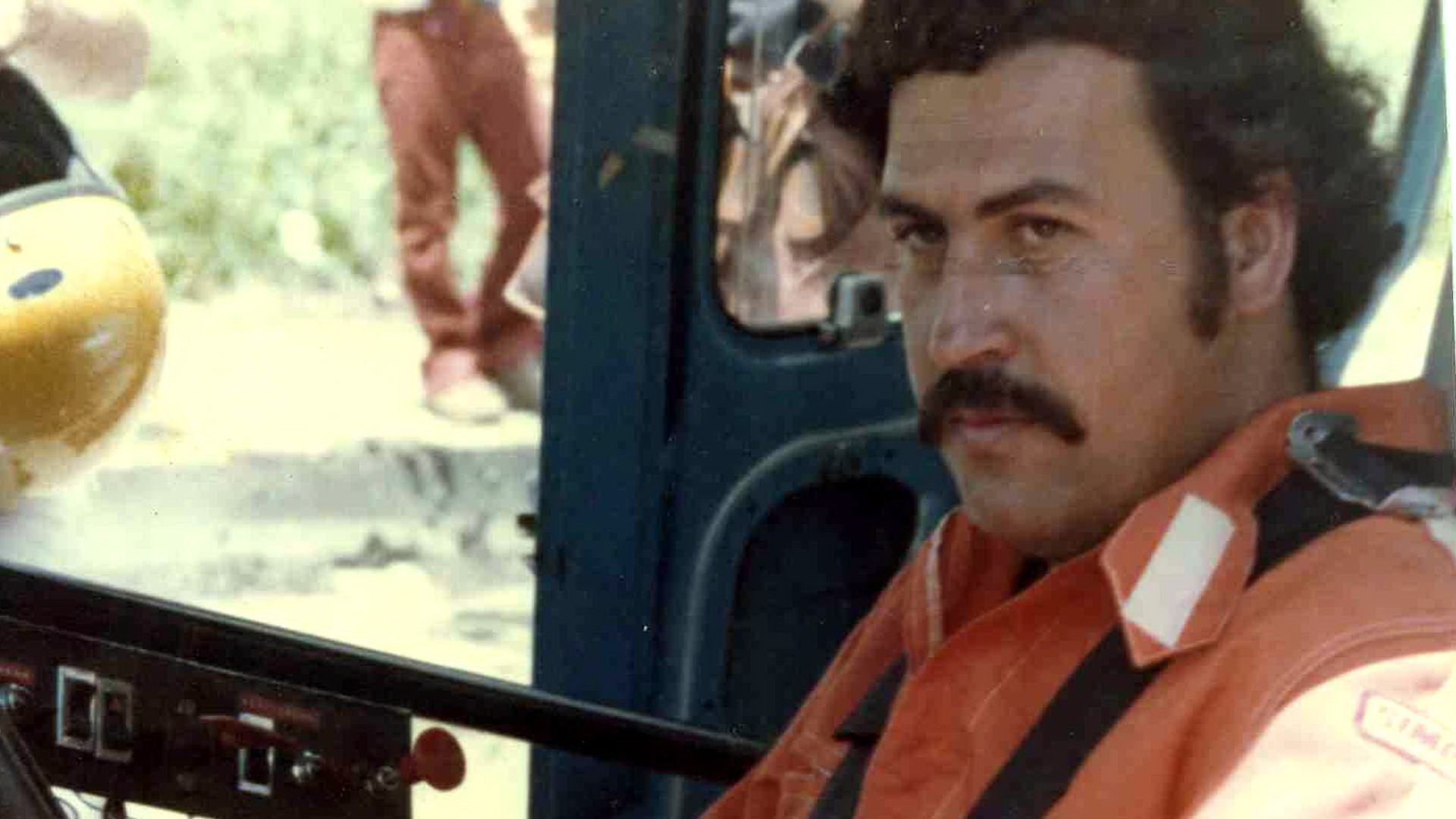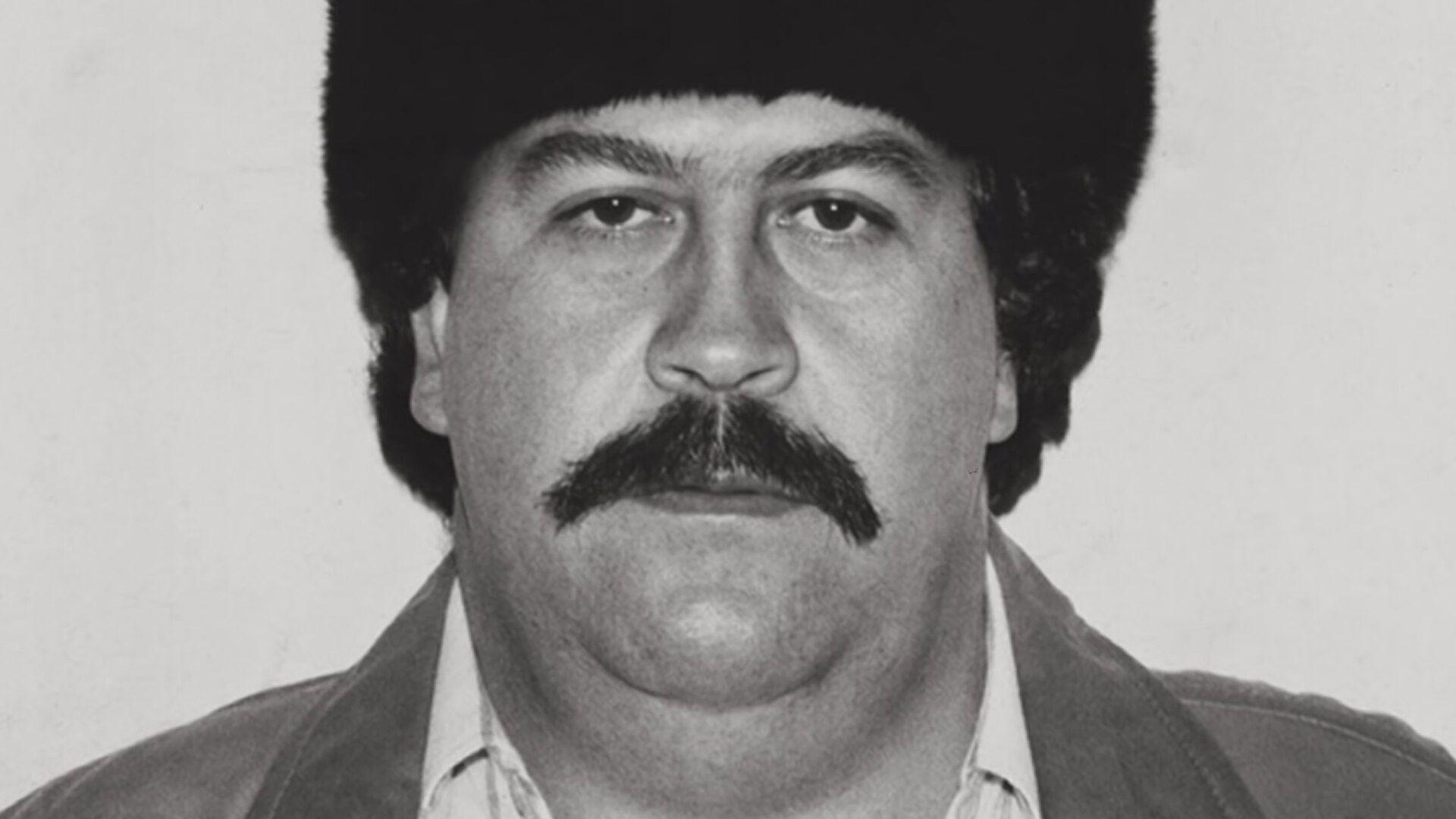Pablo Escobar: The Rise, Fall, And Legacy Of The World's Most Infamous Drug Lord
You’ve probably heard his name in whispers, in movies, or even in songs. Pablo Escobar. The man who built an empire on cocaine and fear. But who exactly was he? Was he just a ruthless cartel boss, or was there more to the story? If you’re diving into this article, you’re about to uncover the truth behind the man who reshaped the drug trade and left a mark on history that’s impossible to ignore.
Escobar’s story is not just about crime and drugs. It’s about power, greed, and the human desire to climb to the top—no matter the cost. From his humble beginnings in Colombia to becoming one of the richest and most feared men in the world, Escobar’s journey is a rollercoaster ride filled with drama, violence, and intrigue. And guess what? The story doesn’t end with his death. His legacy lives on, influencing everything from pop culture to modern-day drug policies.
So buckle up, because we’re diving deep into the life of Pablo Escobar—the man who redefined the drug trade and left a mark on the world that’s still being discussed today. This ain’t just history; it’s a cautionary tale for the ages. Let’s get started!
- Melissa Oneil Nude Facts Myths And The Truth Behind The Controversy
- Bhad Bhabie Nude The Untold Story Behind The Hype And Controversy
Table of Contents
- Biography: Who Was Pablo Escobar?
- Early Life: From Humble Beginnings to Crime
- Rise to Power: Building the Medellín Cartel
- The Drug Empire: How Cocaine Changed the Game
- Violence and Corruption: The Dark Side of Success
- Politics and Influence: Escobar’s Game of Power
- The Hunt: Escobar’s Capture and Escape
- Death: The Final Chapter
- Legacy: The Impact of Escobar’s Reign
- Pop Culture: Escobar’s Influence Today
Biography: Who Was Pablo Escobar?
Pablo Emilio Escobar Gaviria was more than just a name. Born on December 1, 1949, in Rionegro, Colombia, Escobar grew up in a modest household. His parents were schoolteachers, and his early years were far from glamorous. But what set Escobar apart wasn’t just his ambition—it was his willingness to do whatever it took to succeed. By the time he was in his 30s, he was one of the most powerful drug lords in the world, controlling an estimated 80% of the global cocaine market.
But let’s not sugarcoat it. Escobar wasn’t just a businessman; he was a criminal mastermind who used fear, violence, and corruption to maintain his empire. At his peak, he was worth an estimated $30 billion, making him one of the richest criminals in history. And yet, despite his wealth and power, he met a violent end in 1993, shot dead by Colombian authorities in a rooftop shootout.
Here’s a quick glance at Escobar’s life:
- Jaden Newman Nudes Separating Facts From Fiction And Understanding The Bigger Picture
- Lexi Rivera Naked Understanding The Sensation Behind The Search
| Full Name | Pablo Emilio Escobar Gaviria |
|---|---|
| Birthdate | December 1, 1949 |
| Place of Birth | Rionegro, Colombia |
| Parents | Abigaíl Gaviria Restrepo (mother) and Pablo Emilio Escobar Echeverri (father) |
| Children | Juan Pablo Escobar and Manuela Escobar |
| Date of Death | December 2, 1993 |
Early Life: From Humble Beginnings to Crime
Escobar’s early life was anything but glamorous. Growing up in the poverty-stricken town of Rionegro, he learned the value of hustle early on. As a teenager, he was already involved in petty crimes like stealing gravestones and selling fake lottery tickets. But it wasn’t until he discovered the drug trade that his life took a drastic turn.
By the late 1970s, Escobar had already established himself as a key player in the cocaine trade. His rise coincided with the growing demand for cocaine in the United States, and he quickly capitalized on the opportunity. What made Escobar different from other drug lords wasn’t just his ambition—it was his ability to build a network of loyal followers who would do anything for him.
Rise to Power: Building the Medellín Cartel
By the early 1980s, Escobar had founded the Medellín Cartel, a drug empire that would dominate the global cocaine trade for over a decade. The cartel wasn’t just about drugs; it was a complex network of smugglers, enforcers, and corrupt officials who ensured that Escobar’s operations ran smoothly. At its peak, the cartel was smuggling up to 80% of the world’s cocaine into the United States.
But Escobar wasn’t just about business. He also had a knack for public relations. In Colombia, he was seen as a Robin Hood figure, building houses for the poor and donating to charity. His popularity among the lower classes was unmatched, and he even ran for Congress in 1982, using his wealth to influence voters.
The Drug Empire: How Cocaine Changed the Game
Cocaine was more than just a drug for Escobar; it was a product that fueled his empire. By the mid-1980s, the Medellín Cartel was earning an estimated $420 million per week from cocaine sales. That’s right—per week! Escobar’s operations were so vast that he had to build his own fleet of planes and submarines to transport the drugs.
But the drug trade wasn’t without its challenges. Escobar faced constant threats from rival cartels, law enforcement agencies, and even the U.S. government. To protect his empire, he resorted to violence, bribery, and intimidation. His famous motto, “plata o plomo” (silver or lead), summed up his approach: either take the bribe or face the bullet.
Violence and Corruption: The Dark Side of Success
Escobar’s rise to power came at a steep price. His reign was marked by unprecedented levels of violence. Between 1988 and 1993, Colombia saw over 25,000 drug-related deaths, many of which were attributed to Escobar’s cartel. He was responsible for the deaths of judges, politicians, journalists, and even ordinary citizens who dared to stand in his way.
But violence wasn’t his only tool. Corruption was just as effective. Escobar bribed officials at every level of government, ensuring that his operations remained untouched. His influence extended all the way to the Colombian presidency, where he allegedly paid off key figures to look the other way.
Politics and Influence: Escobar’s Game of Power
Escobar’s involvement in politics was both a blessing and a curse. On one hand, it gave him legitimacy and influence. On the other hand, it made him a target for those who opposed his methods. His election to Congress in 1982 was seen as a turning point in his career, but it also drew scrutiny from his enemies.
As his power grew, so did the opposition. In 1989, Escobar declared war on the Colombian government, bombing public buildings, assassinating politicians, and even targeting civilians. His most infamous attack was the bombing of Avianca Flight 203, which killed 107 people. These acts of terror only fueled the government’s determination to bring him down.
The Hunt: Escobar’s Capture and Escape
The hunt for Escobar began in earnest in 1991, when he was finally captured and placed in a luxury prison he built himself, known as “La Catedral.” But even in captivity, Escobar remained in control. He ran his empire from behind bars, using his influence to maintain order.
However, his freedom was short-lived. In 1992, Escobar orchestrated a daring escape from La Catedral, setting off a massive manhunt that would last for over a year. The chase involved Colombian police, the CIA, and even the U.S. Delta Force, all working together to bring him to justice.
Death: The Final Chapter
Escobar’s reign came to an abrupt end on December 2, 1993, when he was cornered on a rooftop in Medellín. In a dramatic shootout, he was killed by Colombian police, marking the end of one of the most infamous drug lords in history. But even in death, Escobar’s legacy lived on.
His death didn’t just end his reign; it also marked a turning point in the war on drugs. The Medellín Cartel was dismantled, and its operations were taken over by rival cartels. But the demand for cocaine remained, and the drug trade continued to thrive, albeit under different leadership.
Legacy: The Impact of Escobar’s Reign
Escobar’s legacy is complex. On one hand, he was a ruthless criminal who left a trail of death and destruction in his wake. On the other hand, he was a mastermind whose influence extended far beyond the drug trade. His story has been told countless times in movies, TV shows, and books, cementing his place in popular culture.
But the real impact of Escobar’s reign can be seen in the policies and laws that were enacted in response to his empire. The war on drugs, which began in the 1980s, continues to shape international relations and domestic policies around the world. And while the drug trade may have evolved, the lessons of Escobar’s reign remain relevant today.
Pop Culture: Escobar’s Influence Today
Escobar’s story has captured the imagination of people around the world. From the Netflix series “Narcos” to the movie “Escobar: Paradise Lost,” his life has been dramatized and romanticized in countless ways. But beyond the entertainment value, his story serves as a warning about the dangers of unchecked power and greed.
In today’s world, where drug cartels continue to operate in the shadows, Escobar’s legacy serves as a reminder of the consequences of allowing criminals to wield too much influence. His story is a cautionary tale for anyone who thinks they can rise to the top without facing the consequences.
Kesimpulan
Pablo Escobar’s story is more than just a tale of crime and drugs. It’s a lesson in power, ambition, and the human desire to succeed at any cost. From his humble beginnings in Colombia to his rise as one of the most feared men in the world, Escobar’s journey is a testament to the complexities of human nature.
As we’ve explored in this article, Escobar’s legacy extends far beyond his death. His influence on the drug trade, politics, and popular culture continues to shape the world we live in today. But more importantly, his story serves as a warning about the dangers of unchecked power and the importance of accountability.
So what’s next? Share your thoughts in the comments below. Do you think Escobar was a villain or a victim of circumstance? And don’t forget to check out our other articles for more fascinating stories about history, crime, and everything in between. Until next time, stay curious and keep learning!



Detail Author:
- Name : Ocie Abernathy
- Username : oma88
- Email : qdooley@gerlach.net
- Birthdate : 1978-04-25
- Address : 759 Braun Ridges Catherinetown, HI 16913-0133
- Phone : +1-607-804-9905
- Company : Russel-Maggio
- Job : Jeweler
- Bio : Voluptate perspiciatis autem laudantium rerum voluptatibus qui illo. Sit molestiae quis eos placeat. Est sunt culpa maiores non et.
Socials
instagram:
- url : https://instagram.com/chanel_dev
- username : chanel_dev
- bio : Quidem qui aut consequatur nam. Delectus aut aut architecto commodi.
- followers : 2146
- following : 2475
tiktok:
- url : https://tiktok.com/@chanel_brakus
- username : chanel_brakus
- bio : Enim in et facere omnis rerum. Nisi minus voluptatem est tempora dolor rem.
- followers : 5929
- following : 696
facebook:
- url : https://facebook.com/chanel2994
- username : chanel2994
- bio : Ut excepturi commodi et qui consectetur voluptatibus.
- followers : 3454
- following : 244
twitter:
- url : https://twitter.com/chanel_brakus
- username : chanel_brakus
- bio : Veniam autem qui aliquid odit est vero quidem amet. Qui autem dolorem nihil. Qui ipsa et cupiditate ut sed. Molestiae omnis et rerum soluta.
- followers : 156
- following : 1667